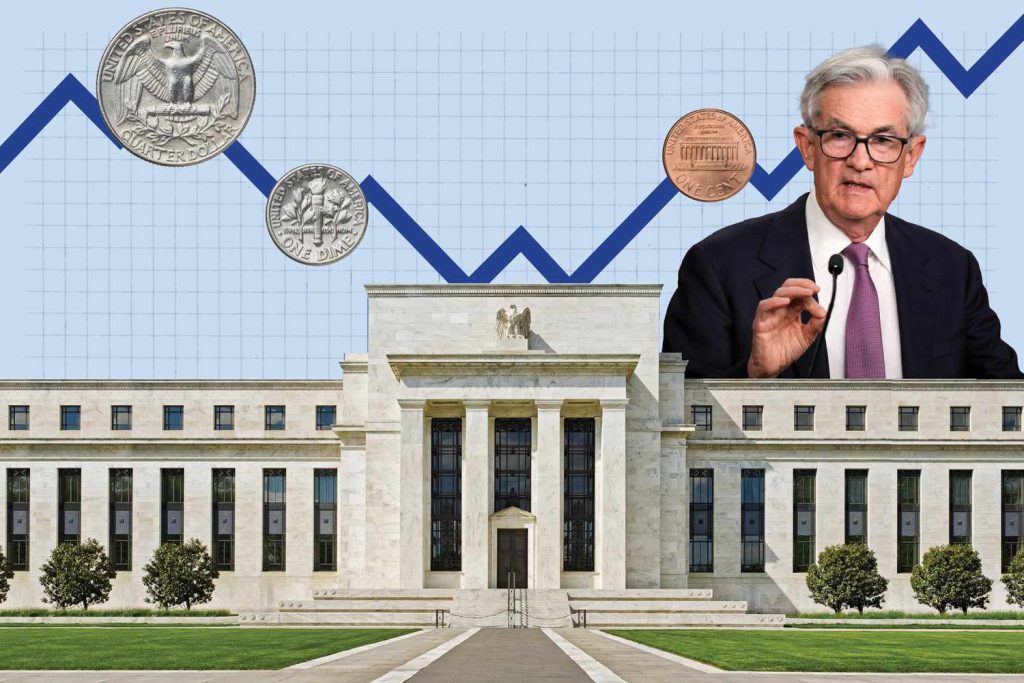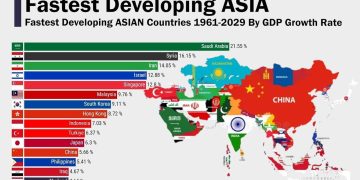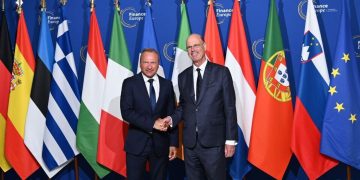As global economies continue to navigate the complexities of post-pandemic recovery, inflationary pressures, and geopolitical uncertainties, the spotlight remains firmly on the world’s two most influential central banks: the U.S. Federal Reserve (Fed) and the European Central Bank (ECB). Both institutions have played pivotal roles in shaping monetary policy landscapes, impacting everything from interest rates to liquidity conditions worldwide. Now, investors and policymakers alike are fixated on one critical question: which central bank will lead the transition from monetary tightening to easing, and how will this pivot impact global markets?
The Current Monetary Policy Landscape
Over the past few years, both the Fed and the ECB have faced unprecedented challenges. The rapid rebound of demand following COVID-19 lockdowns, coupled with supply chain disruptions and energy price shocks, has fueled inflationary pressures across developed economies. In response, central banks moved from historically low interest rates and accommodative stances to aggressive tightening cycles.
- Federal Reserve’s Approach: The Fed has embarked on one of the most aggressive tightening campaigns in decades. It raised policy rates at a rapid clip, aiming to rein in inflation which peaked at multi-decade highs. The Fed’s dual mandate to maintain price stability and maximize employment means it has balanced between cooling inflation and avoiding a sharp economic downturn. Despite some easing in inflationary pressures recently, the Fed remains cautious, signaling that rate hikes might continue until inflation firmly returns to its 2% target.
- European Central Bank’s Stance: The ECB’s journey has been more nuanced. The eurozone’s inflation surge was driven primarily by energy and food prices, with core inflation showing more moderation. Structural economic differences within the eurozone, such as varying growth rates and fiscal policies across member states, have complicated the ECB’s policy response. While the ECB has increased interest rates from historically low levels, it has done so more cautiously than the Fed, emphasizing data-dependency and the need to balance inflation control with supporting fragile growth.
Economic and Financial Indicators Guiding the Pivot
Central banks closely monitor a suite of indicators to assess the need for policy shifts:
- Inflation Data: Sustained moderation in core inflation is paramount. The Fed looks for a clear and durable decline, while the ECB is more sensitive to energy price volatility that heavily influences headline inflation.
- Labor Market Conditions: The U.S. labor market remains remarkably tight, with low unemployment and rising wages fueling inflation. In contrast, the eurozone labor market shows more slack and slower wage growth, which may support an earlier ECB pivot.
- Growth Prospects: Slowing GDP growth or rising recession risks weigh heavily on decisions. Europe’s more fragile growth outlook could compel the ECB to pivot sooner, whereas the U.S. economy’s relative strength might delay the Fed’s easing.
- Financial Market Stability: Stress indicators such as bond yield spreads, credit market liquidity, and equity volatility inform policymakers on systemic risks that might require accommodative policies.
Market Expectations and the Ripple Effects of a Pivot
The anticipation of easing from either central bank typically sparks substantial market reactions:
- U.S. Federal Reserve Easing: A Fed pivot would likely drive a broad-based risk-on environment. Lower U.S. interest rates tend to reduce borrowing costs for corporations and consumers, lifting equities and corporate credit. The dollar might weaken, benefiting emerging markets and commodities. However, the magnitude of the rally depends on the Fed’s communication and the perceived sustainability of easing.
- ECB Easing: If the ECB signals a pivot first, European equities and sovereign bonds would likely rally, supported by improved growth prospects and lower financing costs. The euro could strengthen against the dollar, attracting capital inflows into the eurozone. This scenario could also prompt investors to reassess the eurozone’s growth trajectory and risk premiums.
- Global Market Impact: A coordinated easing from both institutions would unleash significant liquidity, potentially fueling a global rally across equities, fixed income, and alternative assets. Conversely, asynchronous pivots could generate volatility, with capital flowing between regions seeking yield and stability.

Risks to the Pivot Narrative
Despite the optimism that easing could bring, several risks loom:
- Inflation Resurgence: Premature easing risks reigniting inflation, forcing central banks back into tightening and undermining market confidence.
- Geopolitical and Economic Shocks: Unexpected developments such as energy crises, trade tensions, or financial instability could delay pivots or prompt reversals.
- Policy Miscommunication: Central banks’ signaling and forward guidance are critical; missteps can exacerbate volatility and reduce policy effectiveness.
Who Is Likely to Pivot First?
The prevailing view among market analysts is that the ECB may edge toward easing sooner, given its more cautious tightening, economic vulnerabilities, and reliance on energy imports. However, the Fed’s tighter labor market and higher inflation risks mean it will likely hold rates higher for longer, delaying its pivot but exerting more global influence when it occurs.
Strategic Implications for Investors
Investors must navigate these uncertain waters by closely monitoring inflation trends, central bank communications, and economic data releases. Diversifying across asset classes and regions, managing currency exposures, and maintaining flexibility will be key to capitalizing on the eventual policy shifts.
Conclusion
The race between the Federal Reserve and the European Central Bank to pivot toward monetary easing is one of the most closely watched dynamics in global financial markets. While the ECB might lead the way given regional economic conditions, the Fed’s pivot will arguably have broader and deeper market consequences. Ultimately, the timing and nature of these pivots will set the stage for the next major phase of global market direction, making it essential for market participants to stay vigilant and adaptable.





































